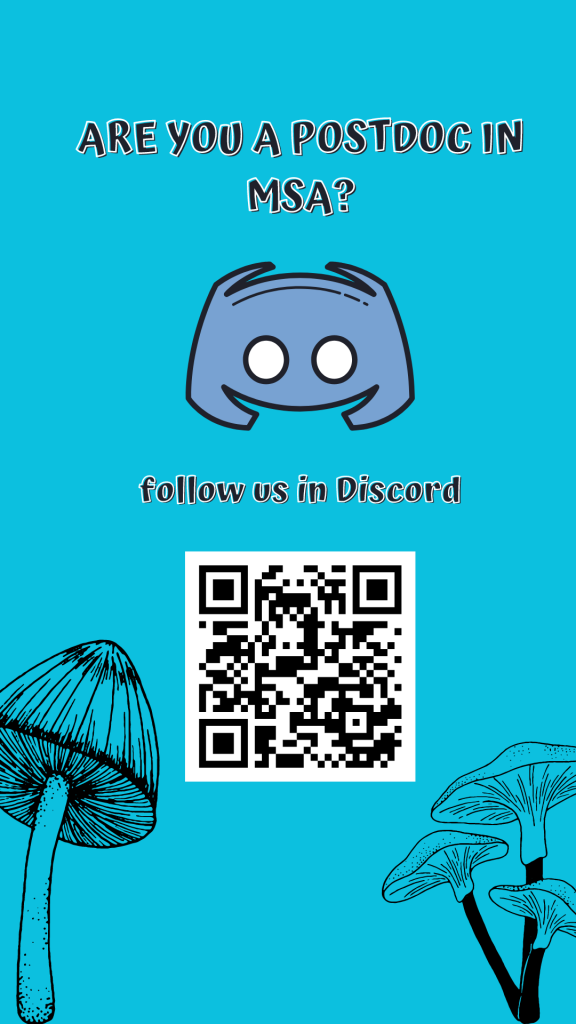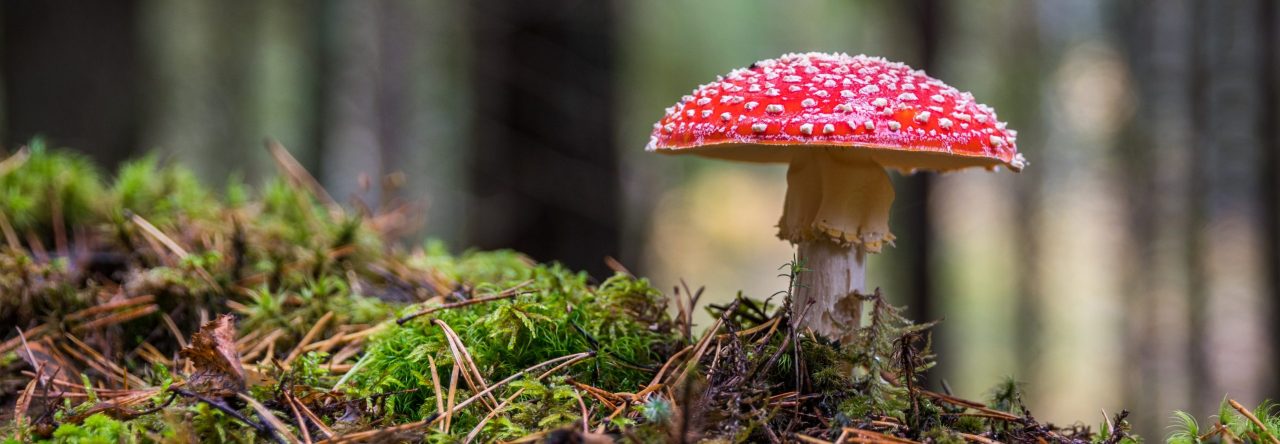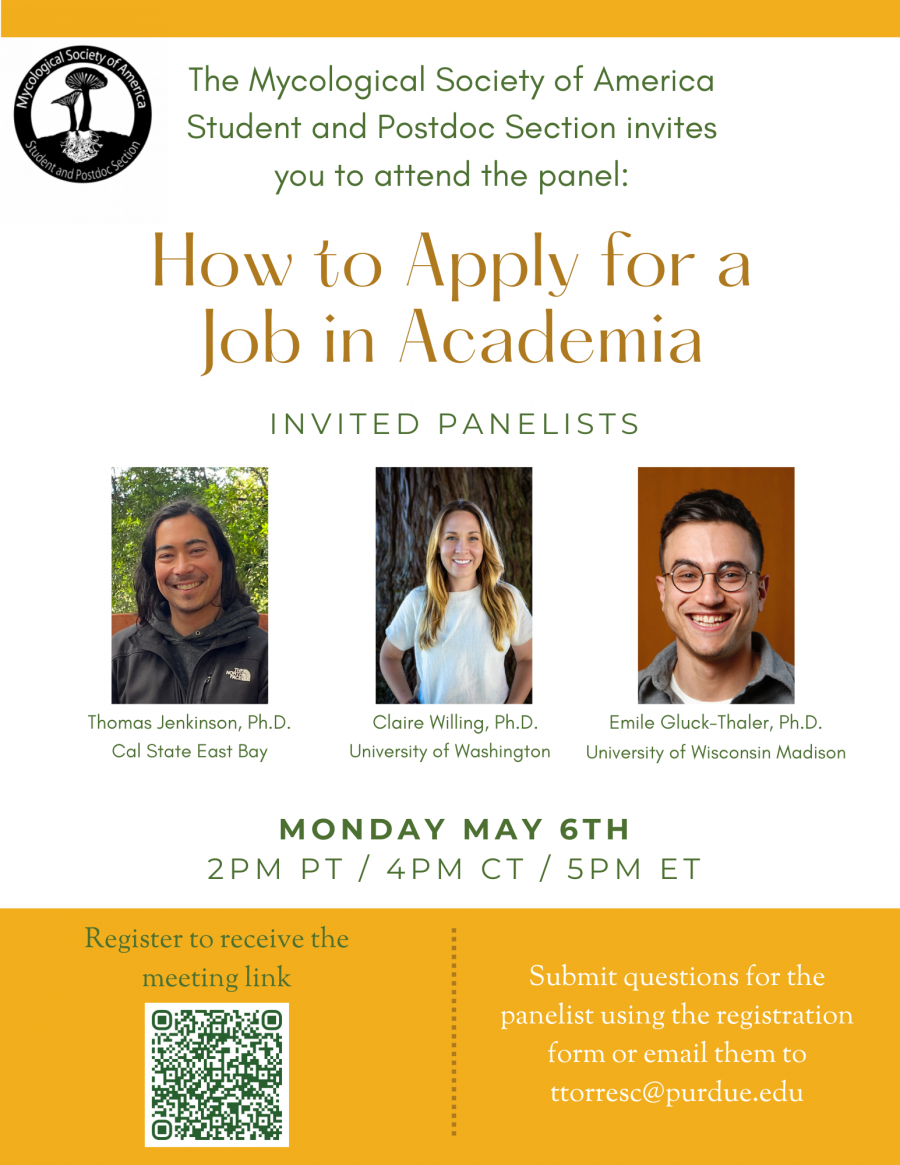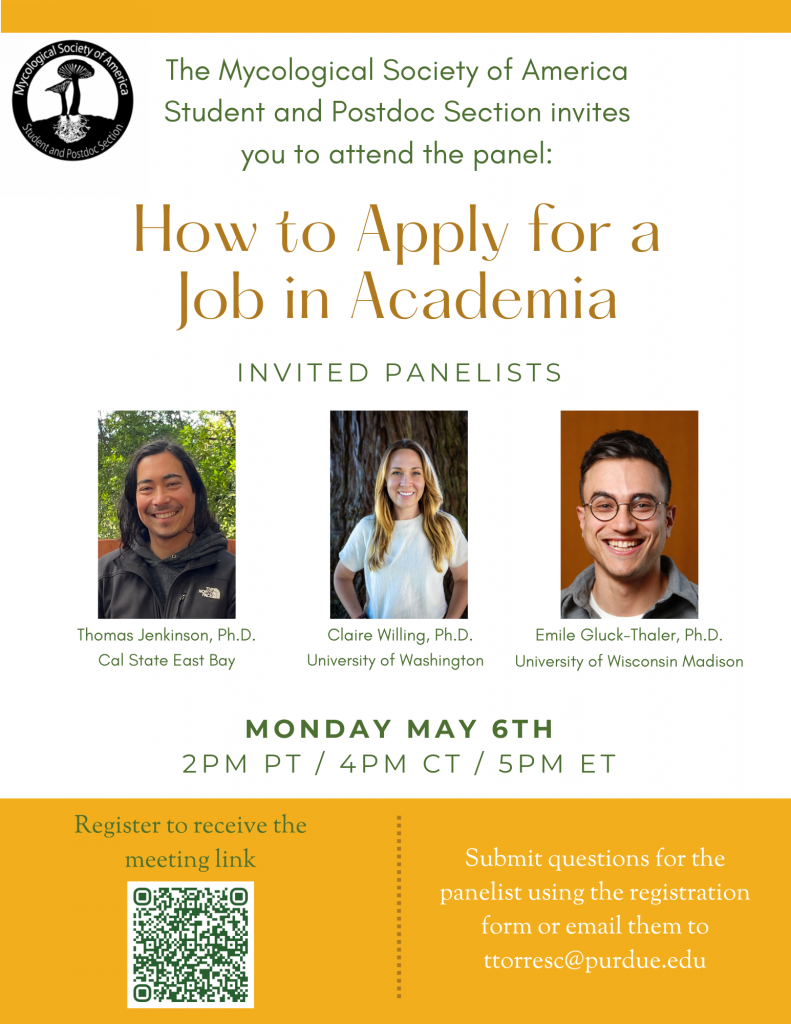
Are you a postdoc in the Mycological Society of America? Then, we’d love for you to join our MSA Postdocs Discord community! Follow the link below to join:



How do you apply for jobs in academia? Join our panel of early career academics on Monday, May 6 at 5 pm ET (2 pm PT) as they discuss their experiences with employment after completing their Ph.D.
To attend this meeting, you must register in advance.
Submit questions to the panelists using the registration form or email questions to ttorresc@purdue.edu
Powered by WordPress & Theme by Anders Norén